Home>Interior Design>Molding & Trim Designs
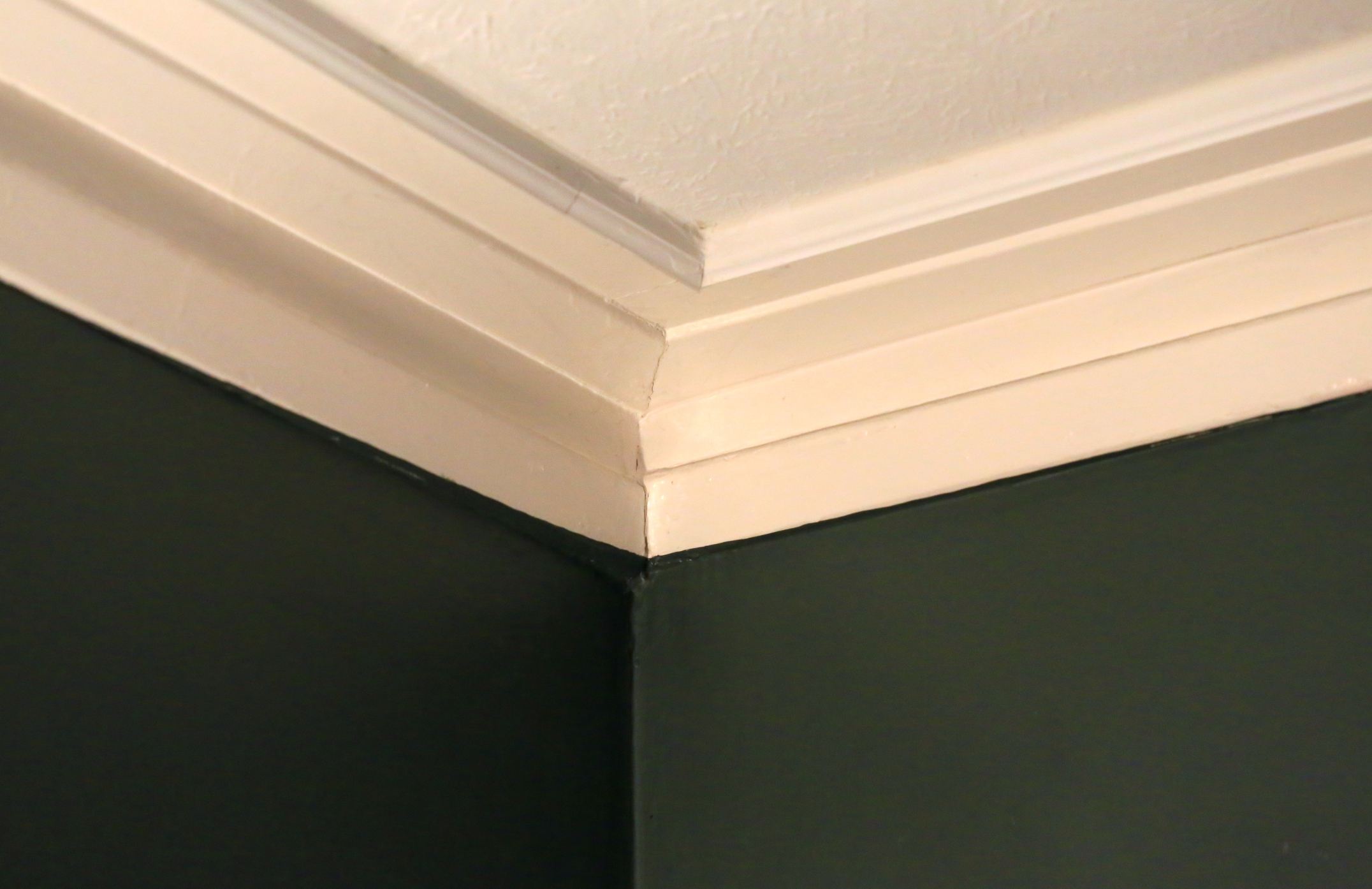

Interior Design
Molding & Trim Designs
Modified: January 6, 2024
Enhance the look of your interiors with elegant molding and trim designs. Discover stunning interior design ideas to elevate your space.
(Many of the links in this article redirect to a specific reviewed product. Your purchase of these products through affiliate links helps to generate commission for Storables.com, at no extra cost. Learn more)
Introduction
Welcome to the world of interior design where every detail matters. When it comes to creating a visually stunning and cohesive space, the devil is in the details, and that’s where molding and trim designs come into play. These architectural elements have the power to transform any room, adding character, elegance, and a touch of sophistication.
From classic crown molding to intricate baseboard trim, the possibilities are endless. Incorporating molding and trim into your home decor not only enhances its aesthetic appeal but also serves practical purposes. In this article, we will delve into the benefits of molding and trim designs, explore the various types available, guide you on choosing the right options for your home, explain the installation process, and discuss maintenance and care.
So, whether you’re undertaking a complete renovation or simply want to elevate the style and charm of your space, join us on this interior design journey as we explore the world of molding and trim.
Key Takeaways:
- Elevate your home’s aesthetic with molding and trim designs, adding character, elegance, and sophistication to any space. Choose the right type to create a cohesive and visually stunning interior design.
- From crown molding to wainscoting, each type of molding and trim offers unique charm and versatility, allowing you to customize your home’s aesthetics to reflect your personal style and preferences.
Read more: How To Trim Stairs
Benefits of Molding & Trim Designs
Molding and trim designs offer numerous benefits when it comes to interior design. Here are some key advantages:
- Enhanced Aesthetics: One of the primary benefits of molding and trim is the visual impact they have on a space. These architectural elements add depth, dimension, and visual interest to walls, ceilings, and floors. Molding and trim can help create a cohesive look and tie together different design elements in a room.
- Defined Spaces: Molding and trim designs can help define and separate different areas within a room. For example, crown molding can distinguish the ceiling from the walls, while chair rail molding can mark the divide between the upper and lower sections of a wall. This can create a sense of structure and organization in your living spaces.
- Architectural Character: Molding and trim designs have the ability to add architectural character to any space. From the simplicity of baseboard trim to the intricate details of wainscoting, these elements can make a room feel more refined and elegant. They can also help replicate the architectural styles of different eras, such as Victorian, Georgian, or Craftsman.
- Hide Imperfections: Molding and trim can be used strategically to conceal imperfections in walls or transitions between different surfaces. By placing trim along the edges of walls or corners, you can create a seamless and polished look, masking any unevenness or gaps.
- Increased Home Value: Incorporating molding and trim designs in your home can significantly increase its value. These architectural features are considered desirable and can make your space more appealing to potential buyers. They give a sense of craftsmanship and attention to detail, enhancing the overall appeal and perceived quality of your home.
Whether you’re looking to add a touch of elegance to your living room, create a statement in your hallway, or elevate the look of your bedroom, molding and trim designs offer countless benefits that can enhance both the aesthetics and value of your home.
Types of Molding & Trim
When it comes to molding and trim designs, there is an extensive range of options to choose from. Each type of molding and trim has its own unique characteristics and aesthetic appeal. Here are some of the most popular types:
- Crown Molding: Crown molding is perhaps the most well-known and widely used type of molding. It is typically installed where the walls meet the ceiling and adds a decorative touch to any room. Crown molding comes in various styles, ranging from simple and streamlined to intricately detailed designs, allowing you to choose the one that best complements your overall decor.
- Baseboard Trim: Baseboard trim is installed along the bottom of walls where they meet the floor. It not only adds a finished look to a room but also helps protect the wall from damage caused by furniture or foot traffic. Baseboard trim comes in different heights and styles, allowing you to match it to your desired aesthetic.
- Door Casing: Door casing, also known as door trim, frames the perimeter of a door, creating a polished and cohesive look. It can be simple or ornate, depending on the overall style of your home. Door casing can enhance the architectural character of a space and tie together the design elements within the room.
- Chair Rail: Chair rail molding is typically installed at the midpoint of a wall horizontally. Its primary purpose is to protect the wall from damage caused by chair backs, hence the name. However, chair rail molding also serves as a decorative feature, adding visual interest and helping to break up the wall into distinct sections.
- Window Casing: Window casing, similar to door casing, frames the perimeter of windows. It adds a finishing touch to the area around windows, creating a cohesive look that complements the overall design of the room. Window casing can be simple or intricate, depending on the desired aesthetic.
- Wainscoting: Wainscoting involves installing panels of wood, tile, or other materials on the lower portion of a wall, typically up to chair rail height. It adds texture, visual interest, and a touch of elegance to a room. Wainscoting can be combined with other types of molding and trim to create a cohesive and sophisticated look.
Each type of molding and trim offers its own unique charm and can be customized to suit different design preferences. Whether you prefer a classic and timeless look or a more contemporary and modern style, there is a type of molding and trim that can elevate the overall aesthetics of your home.
Crown Molding
Crown molding is a popular and versatile type of molding that adds a touch of elegance and sophistication to any room. It is installed where the walls meet the ceiling, creating a seamless transition and visually enhancing the space. Here are some key details about crown molding:
- Styles: Crown molding comes in a variety of styles, ranging from simple and minimalist to intricate and ornate designs. You can choose a style that complements the overall decor and architectural style of your home. Traditional styles often feature detailed patterns and curves, while contemporary styles lean towards clean lines and minimal embellishments.
- Materials: Crown molding can be made from various materials, including wood, medium-density fiberboard (MDF), plaster, or polyurethane. Wood crown molding offers a classic and timeless look, while MDF is a more affordable option that can be easily painted. Plaster and polyurethane crown molding are lightweight and can be molded into intricate shapes and designs.
- Installation: Installing crown molding requires precision and skill. It is typically done with the help of miter saws and coping techniques to create seamless joints at corners and transitions. Hiring a professional installer is recommended for achieving the best results, as they have the expertise and tools necessary for a flawless installation.
- Enhancing Ceiling Height: Crown molding can visually enhance the height of a room. By installing crown molding closer to the ceiling, it creates an optical illusion of higher ceilings, making the space feel more open and spacious. This is especially beneficial for rooms with lower ceilings, as it adds a sense of grandeur and elegance.
- Paint or Stain: Crown molding can be painted or stained to match your desired aesthetic. Painting allows you to customize the color to complement the walls or other design elements, while staining showcases the natural beauty and grain of the wood. Consider the overall color palette of the room and the desired level of contrast when choosing paint or stain for your crown molding.
- Usage in Different Rooms: Crown molding is versatile and can be used in various rooms throughout the house. It adds a touch of elegance and refinement to living rooms, dining rooms, bedrooms, and even bathrooms. Crown molding can be a statement feature in larger rooms or used subtly to add a finishing touch in smaller spaces.
Crown molding is a timeless and elegant addition to any home. Its versatility, range of styles, and ability to visually enhance a room make it a popular choice for homeowners seeking to elevate their interior design.
Baseboard Trim
Baseboard trim is a fundamental element of interior design that not only adds a polished finishing touch to a room but also serves a practical purpose. It is installed along the bottom of walls where they meet the floor, covering the joint and providing protection against damage. Here are some key details about baseboard trim:
- Styles: Baseboard trim comes in a variety of styles, allowing you to choose an option that complements the overall design and aesthetic of your home. Whether you prefer a simple and streamlined look or a more intricate and decorative style, there are baseboard trim options to suit every preference.
- Height and Width: Baseboard trim comes in various heights and widths. The height of the baseboard trim can impact the visual perception of the room. Higher baseboards can add a sense of grandeur and sophistication, while lower baseboards can create a more modern and minimalist look. The width of the baseboard trim should be proportionate to the size of the room and other architectural elements.
- Materials: Baseboard trim can be made from different materials, including wood, medium-density fiberboard (MDF), and plastic. Wood baseboard trim offers a classic and timeless look and can be stained or painted to match your desired aesthetic. MDF baseboard trim is a more affordable option and can be easily painted. Plastic baseboard trim is durable and resistant to moisture, making it suitable for areas prone to moisture, such as bathrooms.
- Installation: Installing baseboard trim requires measuring, cutting, and attaching the trim to the walls. It is important to ensure that the baseboard trim is level and properly aligned. Nail holes and joints should be filled and sanded for a seamless appearance. If you are not confident in your DIY skills, hiring a professional installer can ensure a precise and professional installation.
- Protective Barrier: Baseboard trim acts as a protective barrier, shielding the walls from damage caused by furniture, vacuums, or foot traffic. It prevents scuffs, scratches, and dents, preserving the integrity and appearance of the walls over time.
- Design Cohesion: Baseboard trim helps create a cohesive and finished look in a room. It connects the wall surfaces to the flooring, creating a seamless transition and giving the space a more polished and refined appearance. Baseboard trim can also be coordinated with other types of molding and trim, such as crown molding or door casing, to create a cohesive design theme throughout the home.
Baseboard trim is an essential element of interior design that provides both aesthetic and practical benefits. Its versatility, range of styles, and ability to protect walls make it a crucial detail to consider when designing or renovating your home.
Read more: How To Trim A Carpet
Door Casing
Door casing, also known as door trim or door molding, is an essential architectural detail that enhances the appearance of interior doors. It frames the perimeter of the door, creating a polished and cohesive look. Here are some key details about door casing:
- Styles: Door casing comes in a wide range of styles, allowing you to choose one that complements the overall design aesthetic of your home. From simple and streamlined to ornate and decorative, there are door casing options to suit every preference. Consider the architectural style of your home and the desired level of visual impact when selecting door casing.
- Materials: Door casing can be made from various materials, including wood, medium-density fiberboard (MDF), and polyurethane. Wood casing provides a classic and timeless look, while MDF is a more affordable option that can be easily painted. Polyurethane casing is lightweight and can be molded into intricate shapes and designs.
- Enhanced Door Appearance: Door casing not only adds a decorative element but also enhances the appearance of doors. It creates a finished frame around the door, emphasizing its presence and making it a visually appealing focal point in the room.
- Transition between Walls and Doors: Door casing helps create a seamless transition between the walls and the doors. It covers any gaps or rough edges, providing a clean and polished finish. Door casing also helps hide the area where the door frame meets the wall, creating a more cohesive and aesthetically pleasing look.
- Coordinated Design: Door casing allows you to coordinate the design elements throughout your home. By choosing consistent door casing styles, you can create a cohesive look and tie together the different rooms in your house. Consider matching the door casing with other types of trim, such as baseboard or crown molding, to create a harmonious design theme.
- Installation: Installing door casing involves measuring, cutting, and attaching the trim around the door frame. It’s important to ensure that the door casing is level, properly aligned, and securely fastened. If you are not experienced in carpentry work, it may be best to hire a professional installer to ensure a precise and professional installation.
Door casing is an important detail in interior design that adds a finishing touch to doors and contributes to the overall aesthetic of a room. Its versatility, range of styles, and ability to create visual cohesion make it a valuable addition to any home.
Chair Rail
Chair rail molding, also known as chair rail trim or simply chair rail, is a horizontal molding installed on the walls at approximately chair-height. It serves both a practical and decorative purpose, adding visual interest and protecting walls from damage. Here are some key details about chair rail:
- Protection: Originally designed to prevent chairs from damaging walls, chair rail molding provides a protective barrier against scuffs, dents, and scratches caused by furniture, particularly in dining areas. It creates a buffer zone between the chairs and the wall, preserving the integrity of the walls over time.
- Visual Interest: Chair rail molding adds a decorative element to a room, breaking up the wall into distinct sections and adding visual interest. It introduces a horizontal line that can help define the space and create a sense of balance and proportion.
- Design Transition: Chair rail molding can be used to create a transition between different wall coverings, such as paint and wallpaper. It acts as a separation point, providing a clean and aesthetically pleasing division between the two materials.
- Room Height: Chair rail molding can impact the perceived height of a room. When installed at a higher height, it can visually lower the ceiling and create a cozier atmosphere. Conversely, installing it at a lower height can make the room feel more spacious and open.
- Style and Material: Chair rail molding comes in various styles and materials, allowing you to choose an option that complements your overall design theme. It can be simple and understated, or more ornate and decorative, depending on your preference. Chair rail molding is commonly made from wood or medium-density fiberboard (MDF), but other materials like polyurethane are also available.
- Installation: Installing chair rail molding involves measuring, cutting, and attaching the trim to the walls. It is important to ensure that the chair rail molding is level and securely fastened. Properly aligning the trim around corners and joining separate sections seamlessly is crucial for a professional-looking finish.
Chair rail molding is a versatile interior design element that adds both functionality and visual interest to a room. Whether you want to protect your walls, enhance the aesthetics, or create a design transition, chair rail molding is an excellent choice that can bring charm and style to your space.
When choosing molding and trim designs, consider the architectural style of your home for a cohesive look. Traditional homes often suit more ornate designs, while modern homes may benefit from simpler, clean-lined options.
Window Casing
Window casing, also known as window trim, is an architectural detail that frames the perimeter of windows. It serves both a functional and decorative purpose, enhancing the appearance of windows while providing protection and hiding any gaps or rough edges. Here are some key details about window casing:
- Visual Enhancement: Window casing adds a finished and polished look to windows, elevating their overall appearance. It frames the window, drawing attention to its shape and design, and can create a focal point in the room.
- Protection and Sealing: Window casing provides a protective barrier against moisture, drafts, and insects. It seals the gap between the window frame and the wall, preventing air leakage and improving energy efficiency.
- Style and Design: Window casing comes in a variety of styles and designs, allowing you to customize the look to match your overall interior design. Whether you prefer a simple and streamlined style or an ornate and decorative one, there are options to suit every aesthetic preference.
- Materials: Window casing can be made from different materials, including wood, medium-density fiberboard (MDF), vinyl, or polyurethane. Wood casing offers a classic and natural look, while MDF offers a more affordable and versatile option. Vinyl and polyurethane are low-maintenance materials that are resistant to moisture and can replicate the appearance of wood.
- Coordination with Other Trim: Window casing can be coordinated with other types of trim, such as baseboard or crown molding, to create a cohesive design throughout the room or home. Matching or complementing the style and materials of the trim can tie the space together and create a harmonious visual flow.
- Installation: Installing window casing involves measuring, cutting, and attaching the trim around the perimeter of the window frame. It is important to ensure that the casing is level, properly aligned, and securely fastened. Careful attention to detail is crucial to achieve a professional and polished result.
Window casing adds a decorative element to windows while providing functional benefits. Whether you want to enhance the appearance of your windows, improve energy efficiency, or create a cohesive design, window casing is a versatile and valuable addition to any home.
Wainscoting
Wainscoting is a decorative wall treatment that involves covering the lower portion of a wall with panels or other materials. It adds texture, visual interest, and a touch of elegance to a room. Here are some key details about wainscoting:
- Function and Aesthetics: Wainscoting serves both functional and aesthetic purposes. It protects the lower portion of the wall from scuffs and damage caused by furniture or daily wear and tear. From a design standpoint, wainscoting adds depth, dimension, and character to a room, making it visually appealing.
- Materials: Wainscoting can be made from various materials, including wood, tile, paneling, and even wallpaper. Wood wainscoting is a popular choice and offers a timeless and classic look. Tile wainscoting is a durable option that adds a touch of sophistication and can be easily cleaned in areas prone to moisture, such as bathrooms and kitchens.
- Styles: Wainscoting comes in various styles and designs, allowing you to choose one that suits your aesthetic preferences and complements your overall interior design. From simple and clean lines to intricate patterns and raised panels, there are countless options to create the desired look.
- Installation: Installing wainscoting involves measuring, cutting, and attaching the panels or materials to the wall. It is essential to ensure that the wainscoting is properly aligned, level, and securely fastened. Installing wainscoting can be a DIY project, but it is recommended to hire a professional if you are not experienced in carpentry work.
- Height: The height of the wainscoting can vary depending on personal preference and the style of the room. It is typically installed to a height of about one-third to one-half of the wall but can be adjusted to create a desired visual effect. Higher wainscoting creates a more traditional and formal look, while lower wainscoting can give a modern and chic appearance.
- Combination with Other Trim: Wainscoting can be combined with other types of molding and trim, such as chair rail or crown molding, to create a cohesive and harmonious design. Pairing wainscoting with other architectural elements can elevate the overall aesthetic of the room and add an extra layer of sophistication.
Wainscoting is a versatile wall treatment that adds both beauty and functionality to a space. Whether you choose classic wood paneling or modern tile wainscoting, this architectural feature brings a timeless elegance and a unique charm to any room in your home.
Read more: What Is Trim In Construction
Choosing the Right Molding & Trim for Your Home
Choosing the right molding and trim for your home is crucial as it can greatly impact the overall aesthetic and ambiance of your space. Here are some important considerations to keep in mind when selecting molding and trim:
- Architectural Style: Consider the architectural style of your home. Traditional homes may be better suited with ornate and detailed molding and trim, while modern or minimalist homes may benefit from simpler and sleeker designs. The molding and trim should enhance and complement the existing architectural elements of your space.
- Room Proportions: Take the proportions of the room into account. For larger rooms with high ceilings, taller and more substantial molding and trim can lend a sense of grandeur. In smaller rooms or ones with lower ceilings, modest and less ornate options can create the illusion of more space.
- Visual Cohesion: Strive for visual cohesion throughout your home by considering the overall theme and style of your space. Choose molding and trim that harmonizes with the existing elements, such as flooring, cabinetry, and furniture. Coordinating the materials, finishes, and styles will create a cohesive and well-designed look.
- Personal Preference: Your personal taste and preferences should play a significant role in the decision-making process. Choose molding and trim designs that resonate with you and reflect your unique style. Whether you prefer classic, timeless options or contemporary and avant-garde designs, ensure that you love the final outcome.
- Maintainability: Consider the maintenance requirements of the molding and trim materials. Some options, like wood, may require periodic cleaning, refinishing, or touch-ups, while others, like vinyl or polyurethane, are low-maintenance and easy to clean. Keep in mind that high-traffic areas might require more durable materials that can withstand wear and tear.
- Budget: Set a budget for your project and consider the costs associated with different molding and trim options. The materials, size, intricacy of the design, and installation costs should be taken into account. Remember to strike a balance between the quality of the materials and your budgetary constraints.
When choosing the right molding and trim for your home, it’s important to find a balance between functionality, aesthetics, and personal preference. By considering the architectural style, room proportions, visual cohesion, personal taste, maintainability, and budget, you’ll be able to select molding and trim that enhances the beauty and adds a touch of elegance to your living spaces.
Installation Process of Molding & Trim
The installation process of molding and trim requires attention to detail and skill to achieve a professional and polished finish. While it may be possible to install molding and trim as a DIY project, it is recommended to hire a professional if you are not experienced in carpentry work. Here are the general steps involved in the installation process:
- Measurements and Planning: Begin by measuring the length and height of the walls and determining the quantity of molding and trim needed. Plan where each piece will be installed, taking into consideration corners, angles, and transitions between different wall surfaces.
- Cut the Molding & Trim: Use a miter saw or other appropriate tools to cut the molding and trim pieces to the correct lengths and angles. Make sure to measure twice and cut once to ensure accurate dimensions. Take into account any corner joints or angled cuts needed for seamless transitions.
- Prepare the Walls: Before attaching the molding and trim, ensure that the walls are clean, smooth, and free of any debris. Fill any holes or cracks with spackling paste and sand the surface to create a smooth and even finish.
- Attach the Molding & Trim: Apply a small amount of construction adhesive or use finishing nails to attach the molding and trim to the wall. Secure the pieces firmly and make sure they are level and aligned. Use a level and a carpenter’s square to ensure accurate placement.
- Fill and Sand: Fill any nail holes or gaps with wood filler or caulk. Once dry, use a sanding block or sandpaper to smooth out any rough edges or imperfections. The goal is to achieve a seamless and even surface.
- Paint or Stain: After the molding and trim are securely in place and any necessary repairs have been made, it’s time to paint or stain the trim to match your desired aesthetic. Make sure to use an appropriate primer if needed and apply the paint or stain evenly and smoothly.
- Final Touches: Once the paint or stain has dried, inspect the installation for any touch-ups or areas that may require additional attention. Ensure that the lines are crisp, the corners are aligned, and the overall appearance is clean and polished.
Remember, the installation process may vary depending on the specific type of molding and trim, as well as the materials used. It’s important to follow the manufacturer’s instructions and consult with professionals if needed. Proper installation will ensure that your molding and trim not only look aesthetically pleasing but also last for years to come.
Maintenance and Care for Molding & Trim
Molding and trim not only enhance the aesthetic appeal of your home but also require regular maintenance to keep them looking their best. Here are some tips for maintaining and caring for your molding and trim:
- Cleaning: Regularly dust your molding and trim using a soft cloth or a feather duster to remove any accumulated dirt or dust. For more stubborn stains or build-up, you can use a mild soap and water solution. Avoid using abrasive cleaners or harsh chemicals that can damage the finish.
- Inspect for Damage: Periodically inspect your molding and trim for any signs of damage, such as chips, cracks, or warping. Address any issues promptly to prevent further damage. Depending on the material, you may need to patch or repair damaged areas or even replace the affected sections.
- Wood Care: If you have wood molding and trim, it’s important to protect and maintain the wood’s natural beauty. Apply a wood polish or wax to keep the finish in good condition and prevent drying or cracking. Regularly inspect for any signs of wood rot, pests, or moisture damage, especially in areas prone to humidity or moisture.
- Paint or Stain Touch-Ups: Over time, the paint or stain on your molding and trim may show signs of wear or fading. Perform regular touch-ups to maintain a fresh and vibrant appearance. Clean the area, sand if necessary, and apply a new coat of paint or stain that matches the existing color.
- Protect from Moisture: Moisture can be damaging to certain materials, such as wood or MDF. Take precautions to protect your molding and trim from excessive moisture, especially in areas like bathrooms and kitchens. Use sealants or water-resistant coatings to add a layer of protection and prevent moisture damage.
- Avoid Impact: Be mindful of any potential impact or rough handling that could cause damage to your molding and trim. Avoid bumping into it with furniture or objects, and handle it with care when moving or rearranging items in the room.
- Regular Inspections: Make it a habit to regularly inspect your molding and trim for any signs of wear, damage, or discoloration. Early detection and timely repairs or maintenance can prevent small issues from becoming larger and more costly problems.
Remember, proper maintenance and care will help ensure the longevity and beauty of your molding and trim. Regular cleaning, inspections, and addressing any issues promptly can keep them looking their best and enhance the overall appeal of your home.
Conclusion
Molding and trim designs are essential elements that can transform any space, adding character, elegance, and a touch of sophistication. From crown molding to baseboard trim, door casing to chair rail, window casing to wainscoting, these architectural features have the power to enhance the aesthetics and ambiance of your home.
By carefully selecting the right type of molding and trim, you can create a cohesive and visually stunning interior design. Consider factors such as architectural style, room proportions, visual cohesion, personal preferences, maintainability, and budget when making your choices.
The installation process of molding and trim requires attention to detail and, in some cases, professional expertise. Proper measurements, cutting, alignment, and securing are crucial to achieve a flawless finish. Similarly, regular maintenance and care are essential to preserve the beauty and functionality of your molding and trim. Dusting, cleaning, inspections, and repairs should be performed as needed to keep them in top condition.
Whether you desire a classic and timeless look or a more modern and contemporary style, molding and trim designs offer versatile options that can enhance the overall appeal of any room. From adding visual interest and defining spaces to protecting walls and creating a cohesive design theme, they are the finishing touches that elevate your home’s interior design.
So, embrace the world of molding and trim, and let your creativity blend with the architectural elegance they bring. With the right choice and proper care, your molding and trim designs will not only enhance your living spaces but also leave a lasting impression on anyone who enters your home.
Frequently Asked Questions about Molding & Trim Designs
Was this page helpful?
At Storables.com, we guarantee accurate and reliable information. Our content, validated by Expert Board Contributors, is crafted following stringent Editorial Policies. We're committed to providing you with well-researched, expert-backed insights for all your informational needs.

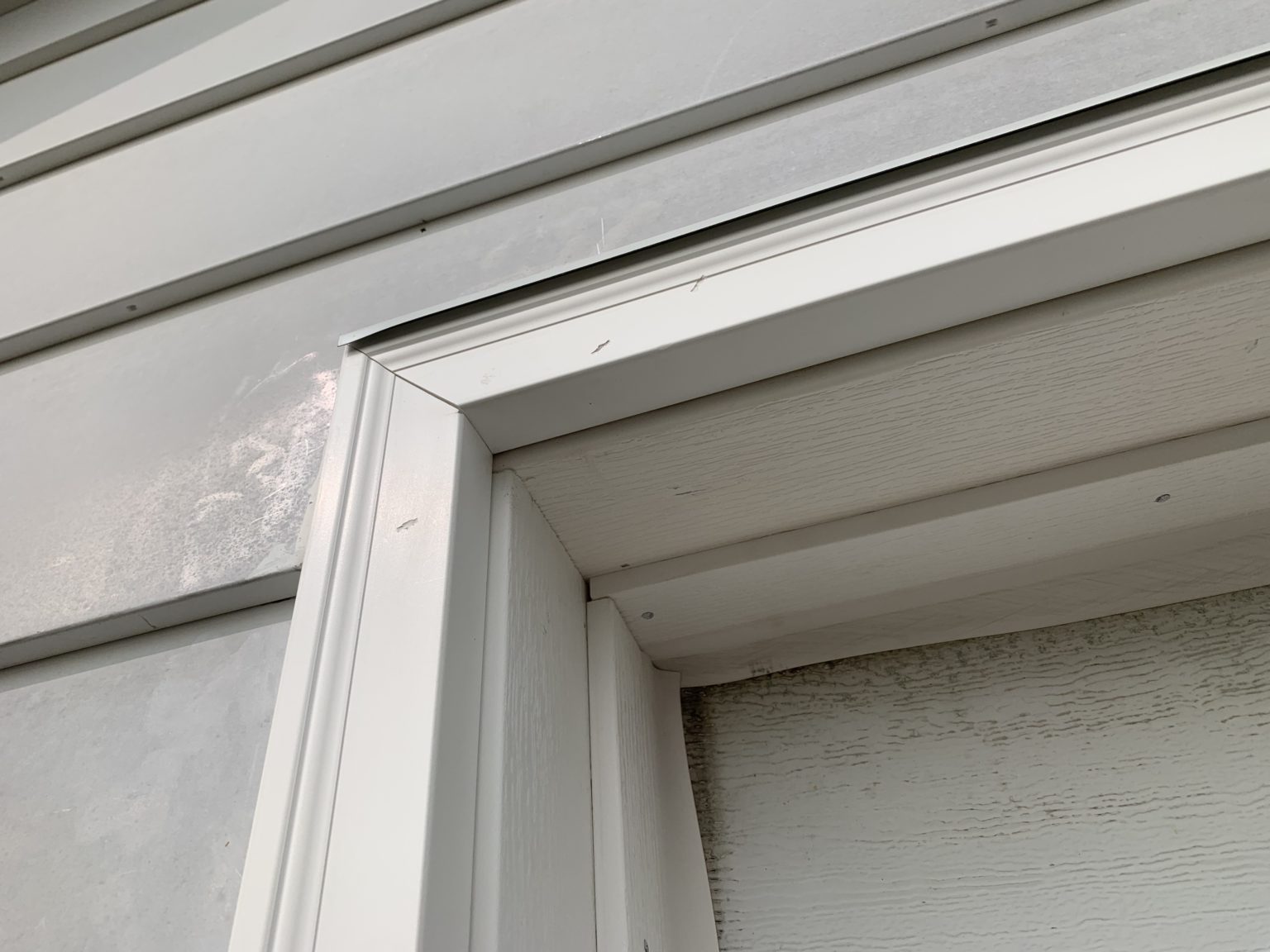



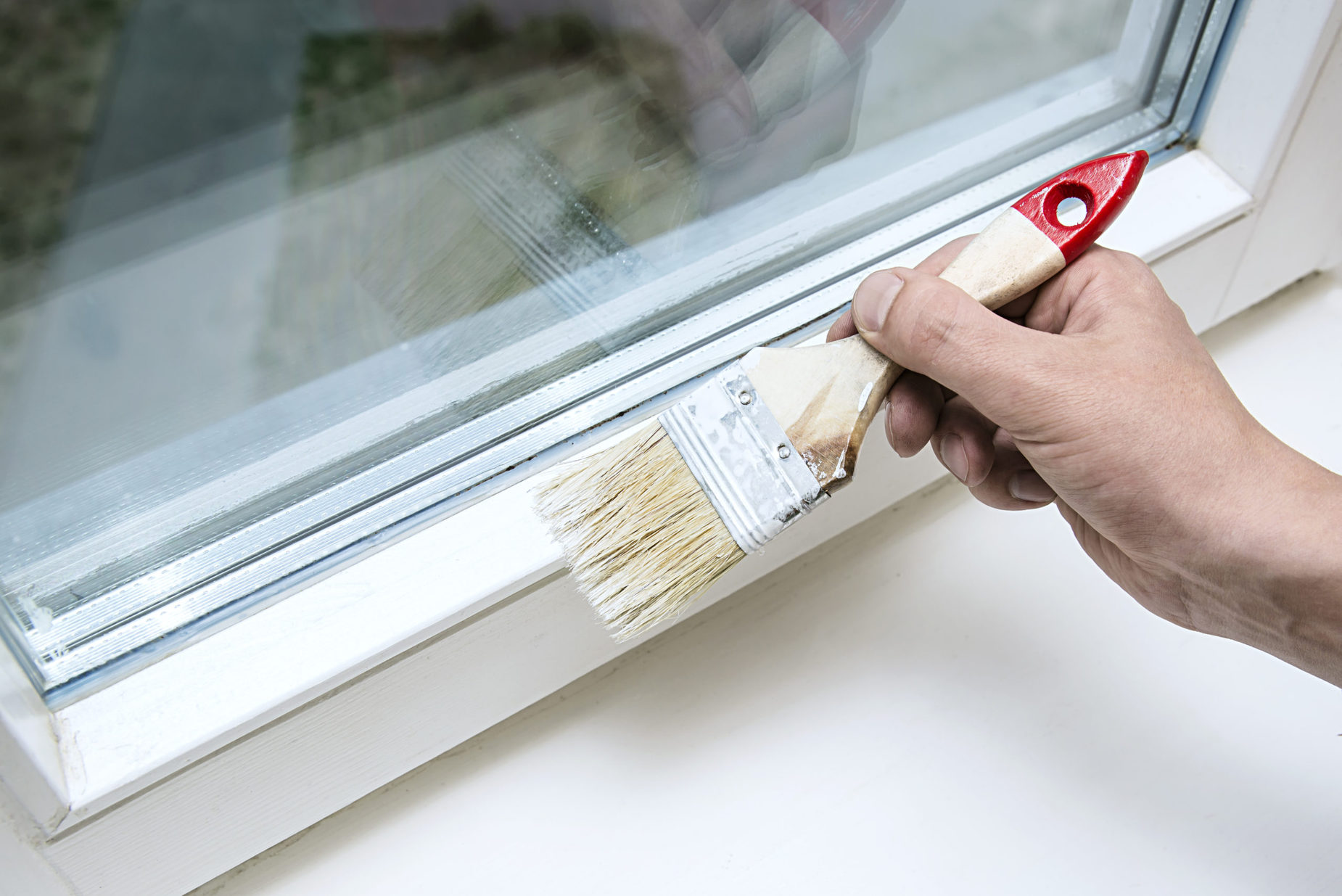



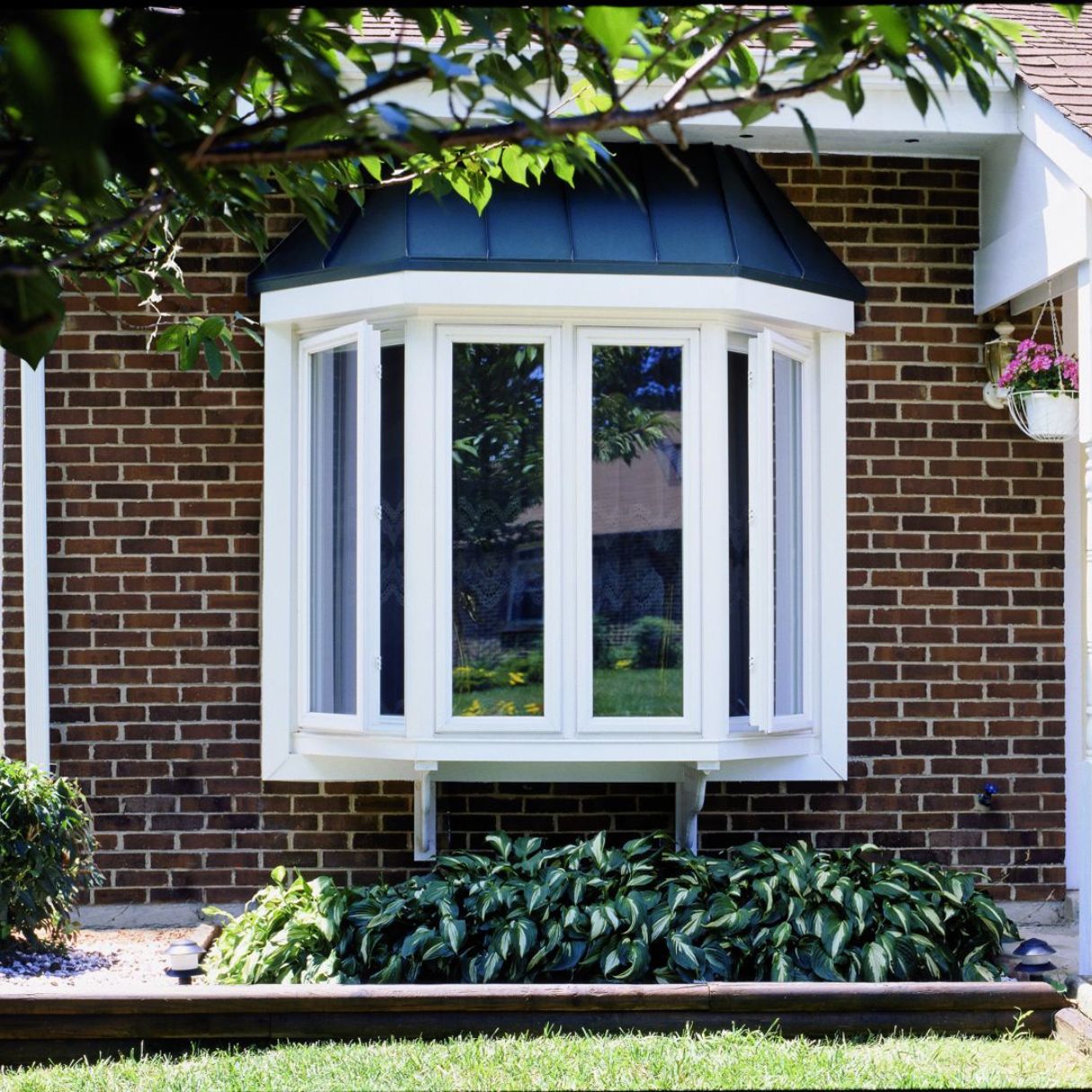
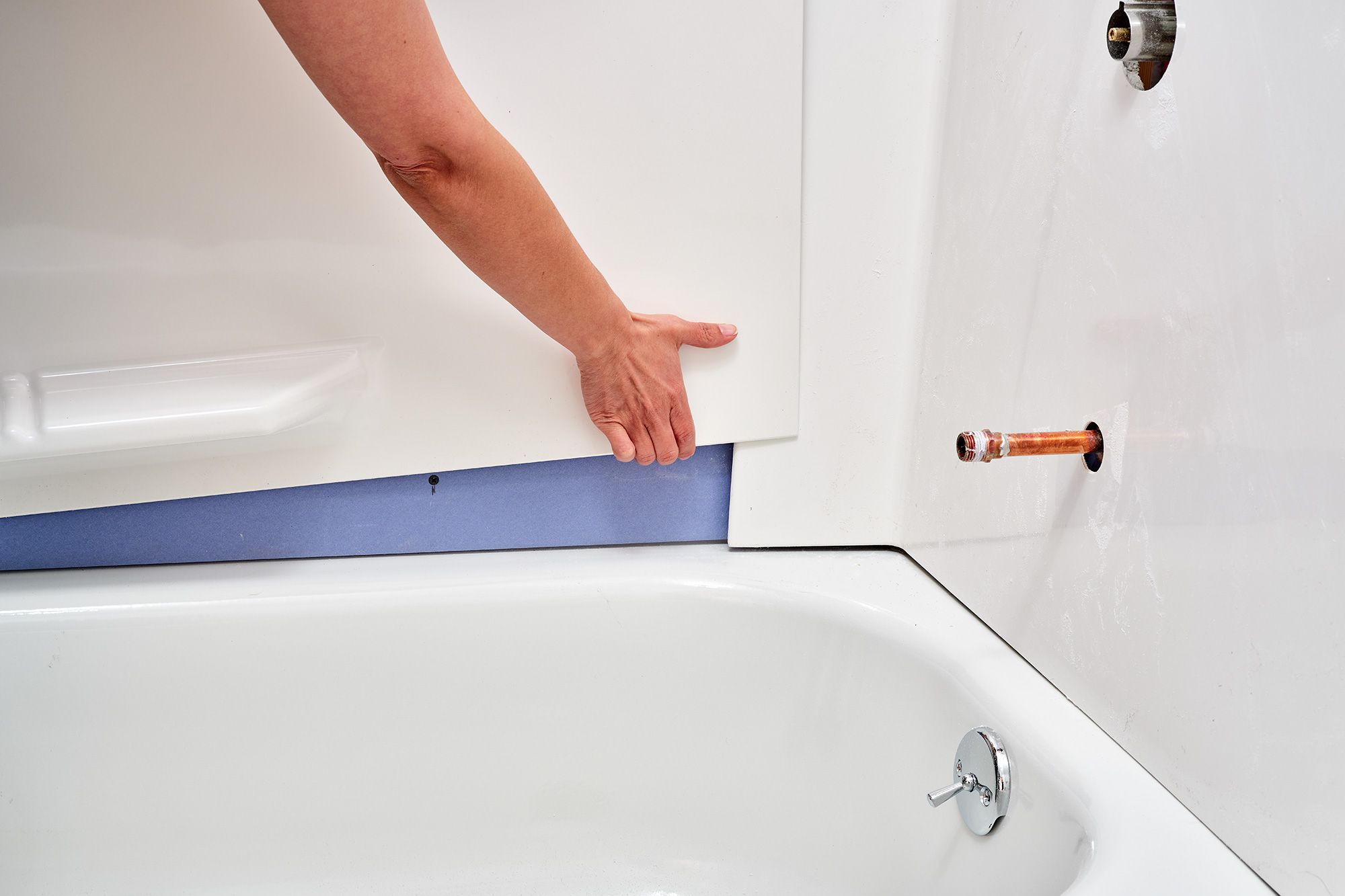



0 thoughts on “Molding & Trim Designs”